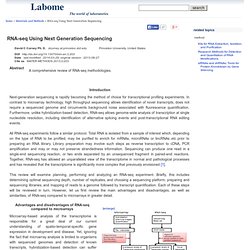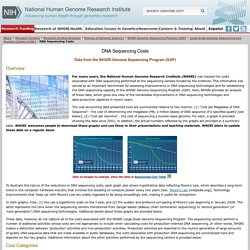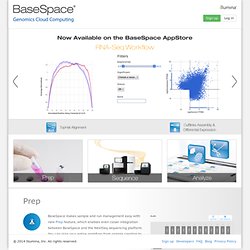

Next Generation Sequencing (NGS) The high demand for low-cost sequencing has driven the development of high-throughput sequencing, which is also termed as Next generation sequencing (NGS).

Thousands or millions of sequences concurrently produced in next-generation sequencing process. Next generation sequencing has become a commodity. With the commercialization of various affordable desktop sequencers, NGS will be of reach by more traditional wet-lab biologists . As seen in recent years, genome-wide scale computational analysis is increasingly being used as a backbone to foster novel discovery in biomedical research. However, as the quantities of sequence data increase exponentially, the analysis bottle-neck is yet to be solved. Drawing from the obvious goodwill and community spirit displayed on discussion forums, and exploiting the collaborative tools made available by the Wikimedia foundation, we propose to initiate the editing of a collaborative WikiBook on NGS.
RNA-seq Using Next Generation Sequencing. Introduction Next-generation sequencing is rapidly becoming the method of choice for transcriptional profiling experiments.

In contrast to microarray technology, high throughput sequencing allows identification of novel transcripts, does not require a sequenced genome and circumvents background noise associated with fluorescence quantification. Furthermore, unlike hybridization-based detection, RNA-seq allows genome-wide analysis of transcription at single nucleotide resolution, including identification of alternative splicing events and post-transcriptional RNA editing events. All RNA-seq experiments follow a similar protocol. Total RNA is isolated from a sample of interest which, depending on the type of RNA to be profiled, may be purified to enrich for mRNAs, microRNAs or lincRNAs etc prior to preparing an RNA library. This review will examine planning, performing and analyzing an RNA-seq experiment.
NHGRI Genome Sequencing Program - DNA Sequencing Costs. DNA Sequencing Costs Data from the NHGRI Genome Sequencing Program (GSP) Overview For many years, the National Human Genome Research Institute (NHGRI) has tracked the costs associated with DNA sequencing performed at the sequencing centers funded by the Institute.

This information has served as an important benchmark for assessing improvements in DNA sequencing technologies and for establishing the DNA sequencing capacity of the NHGRI Genome Sequencing Program (GSP). Here, NHGRI provides an analysis of these data, which gives one view of the remarkable improvements in DNA sequencing technologies and data-production pipelines in recent years. Differential expression analysis with TopHat and Cufflinks. Illumina - BaseSpace. Instrument integration BaseSpace is the first cloud platform to be directly integrated in to the industry’s leading sequencing platforms, with no cumbersome and time consuming data transfer steps.

Simply select the option to use BaseSpace for storage and analysis when starting a sequencing run on a MiSeq, HiSeq or NextSeq instrument. The instrument seamlessly pushes data to BaseSpace for automatic analysis and storage, with the option of retaining data for local hosting. There is no need for a manual and time-consuming data-transfer step. The data is already up in the cloud, for you and your collaborators to access anywhere, anytime. Next Generation Genomics: World Map of High-throughput Sequencers. European Nucleotide Archive. SRA - NCBI.
GALAXY servers (France or close) MiRNA tools. Courses. RNAseq process (under process)